Creating Harmony: Your Step-by-Step Japandi Color Palette Guide
- 1. The Foundations of the Japandi Color Palette
- 2. Creating Your Perfect Japandi Color Palette
- 3. Room-by-Room Japandi Color Palette Guide
- 4. Seasonal Adjustments for Your Japandi Color Palette
- 5. 5 Tips for Incorporating the Japandi Color Palette
- 6. The Seamless Integration of Color, Culture, and Materials

The Japandi design style brings together the best of two worlds: the clean, minimal lines of Japanese aesthetics and the cozy, functional warmth of Scandinavian design. At the heart of this fusion lies the Japandi color palette, a thoughtful blend of soft neutrals, earthy tones, and natural contrasts.
Far from being just a trend, the Japandi color palette reflects a lifestyle choice—one that values simplicity, balance, and harmony with nature. A blend of muted neutrals, warm earthy shades, and subtle pops of contrast, the Japandi color palette helps balance the minimalist principles of Japanese design with the cozy charm of Scandinavian interiors. It is a palette designed to evoke tranquility and elevate everyday living.
In this guide, we will explore the essentials of Japandi colors, offer tips for crafting your own palette, and provide room-by-room guidance to help you apply it to different spaces. Whether you are redesigning your home or simply refreshing a single room, Japandi offers timeless inspiration.
1. The Foundations of the Japandi Color Palette
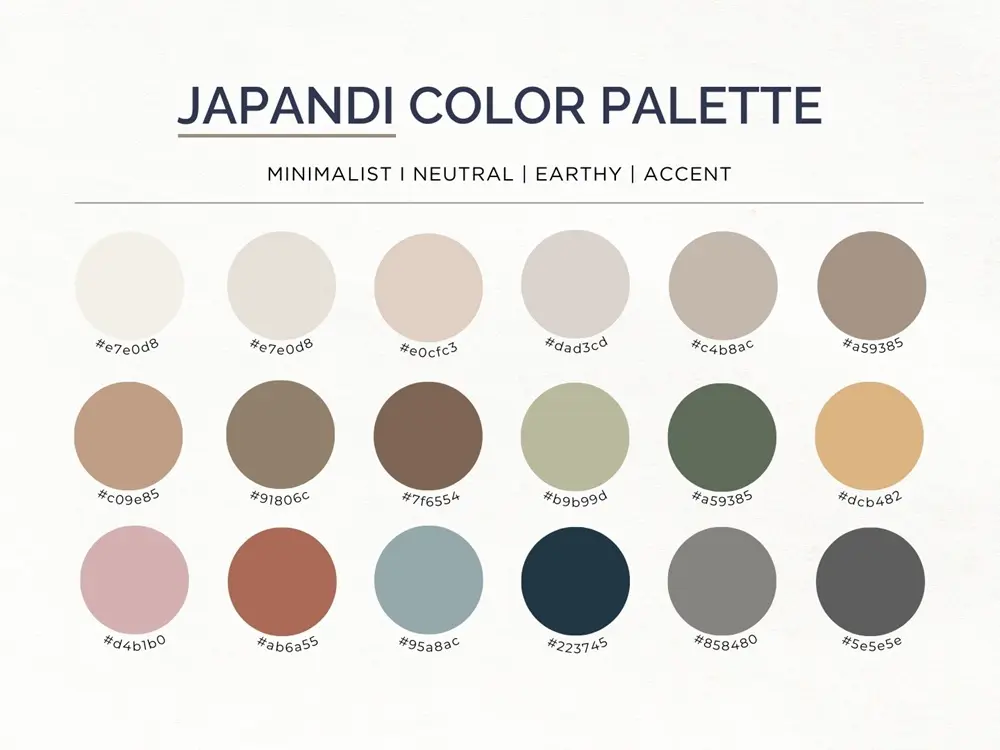
The Japandi aesthetic is deeply rooted in simplicity, natural harmony, and intentional design. Its color palette reflects these principles by drawing inspiration from the natural world, and blending the minimalist elegance of Japanese design with the cozy warmth of Scandinavian interiors.
Key Principles of the Color Palette
Neutral tones are the cornerstone of the Japandi color palette. They serve as the perfect backdrop, creating a sense of calm and balance while allowing other design elements to shine. Common base colors include beige, cream and taupe.
Accent colors in the palette are inspired by nature, such as earthy greens, muted blues and warm browns. These colors add depth, warmth, and a grounding effect to your spaces.
In addition, contrast plays a vital role in achieving harmony in Japandi design. Light and dark shades are paired to create a visually compelling yet understated aesthetic. For instance, pairing creamy whites with charcoal or black accents.
Cultural Influences on Japandi Colors
The color choices in Japandi interiors are influenced by two distinct but complementary cultural philosophies, namely Japanese wabi-sabi and Scandinavian hygge.
Wabi-sabi emphasizes muted, natural tones that reflect the impermanent nature of life and the inherent beauty of simplicity. Muted greens and browns reflect the natural landscape, particularly plants, moss, and trees, which change and evolve. Gray tones evoke the appearance of aged stone or softened metal, further emphasizing the passage of time. Soft neutrals like beige, taupe, and off-white remind us of the inherent beauty of the ordinary.
Materials and Textures That Complement the Palette
Both Japanese and Scandinavian design cultures have a long history of valuing natural materials that complement their minimalist aesthetics. Materials such as wood, linens, wool , cotton as well as ceramics and stone play a crucial role in bringing warmth, depth, and texture to the space while also enhancing the calm, balanced mood created by the color palette.
2. Creating Your Perfect Japandi Color Palette
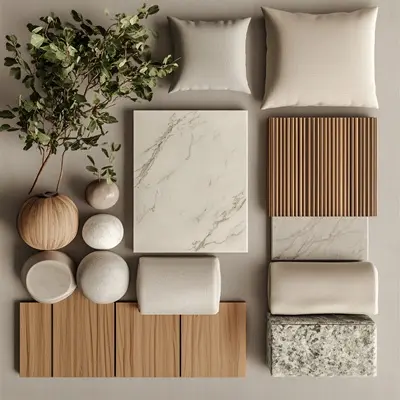
Crafting your perfect Japandi color palette is all about blending simplicity with nature, harmony with contrast, and warmth with minimalism. Discover how you can begin creating a Japandi color palette that reflects your style and fits seamlessly into your space.
Steps to Build Your Palette
Firstly, identify your base, secondary, and accent colors. Begin by selecting light, muted hues that promote a sense of spaciousness and tranquility. These tones can act as the primary colors for your walls, floors, or larger furniture pieces.
Common neutral shades are soft whites and off-whites (ivory and warm white), light grays (dove gray, pebble), beige and taupe (sand, taupe gray), and warm, earthy tones like light clay or ivory.
Next, introduce accent colors that reflect the natural world. These subtle yet impactful hues help to soften the neutral palette and bring warmth, depth, and character to the space. Japandi accent colors include muted greens (sage, olive, moss), warm browns (walnut, terracotta, deep tan), soft blues (slate, dusty blue, mist) and natural wood tones (oak, walnut, ash).
Color Combinations That Work
Achieving the perfect Japandi palette requires a balance between light and dark colors. The interplay of these contrasts is key to creating the harmonious yet dynamic atmosphere that defines the style. While light tones promote a sense of openness, dark tones create a feeling of depth and intimacy.
Consider pairing soft beige with sage green accents, warm white with charcoal and natural wood, and muted blue with off-white and light oak. Avoid an overly stark or overly warm look.
Personalize Your Palette with Natural Materials and Textures
Once you have the foundational colors in place, consider how the colors will interact with the materials and textures in the room. Complement and elevate your color choices with earthy elements like wood, stone, ceramics, and textiles.
3. Room-by-Room Japandi Color Palette Guide

Since Japandi design emphasizes harmony, it is essential to approach each space individually, tailoring the color palette to the function and atmosphere you want to evoke. This room-by-room guide will help you choose the perfect Japandi color palette for every area in your home.
Living Room
The living room is often the heart of the home, where relaxation and socializing come together. The Japandi style encourages creating a tranquil and inviting environment with a balance of warm, neutral tones and natural materials.
Keep the wall colors neutral (warm whites, light grays, or soft beiges), with subtle contrasts in furniture and textiles. Choose furniture with warm earthy accents that create a sense of coziness. Muted greens, warm browns, and deep blues add depth and personality without being too bold. Incorporate natural textures such as linen cushions, wool rugs, and wooden furniture.
Bedroom
The bedroom is a sanctuary for rest and relaxation, therefore the color palette should reflect a sense of calm and serenity. Soft, neutral tones and muted accents promote restful sleep while adding warmth and character to the space.
Select soft neutrals like ivory, off-white, or light gray for the walls, along with secondary soft, muted shades that evoke peace and comfort. Pale blues, soft greens, and pastel pinks can be applied in soft furnishings, such as bedding, pillows, or rugs. Include darker accents to add depth and sophistication. A deep walnut bed frame or a charcoal gray side table can balance out the lighter tones.
Kitchen
A Japandi kitchen combines function and beauty in an inviting space with a neutral base and warm, earthy tones. The kitchen should be bright and airy, so opt for crisp whites or light grays as the main color for cabinetry, walls, and countertops. These hues help to open up the space, making it feel larger and cleaner.
Introduce earthy greens, soft blues, and terracotta tones through accessories like dishware, textiles, and plants. These colour accents bring warmth and visual interest without overwhelming the space. Wood also plays a major role in Japandi kitchens; wooden bar stools, open shelving, or a wooden dining table can bring an organic feel to the kitchen.
Bathroom
The bathroom in a Japandi home should feel like a serene, tranquil retreat. Light, airy tones, combined with earthy textures and materials, create a minimalist sanctuary perfect for unwinding.
White, soft gray, or muted beige should dominate the walls, creating a calming, spa-like atmosphere. Earthy greens, muted blues, and natural wood tones also work beautifully in the bathroom. These colors can be introduced through accessories like towels, bath mats, and plant pots.
To add a sense of sophistication and depth, incorporate darker tones in small doses. A dark wood vanity, charcoal gray shower tiles, or a black-framed mirror will create contrast and balance the lighter elements.
4. Seasonal Adjustments for Your Japandi Color Palette
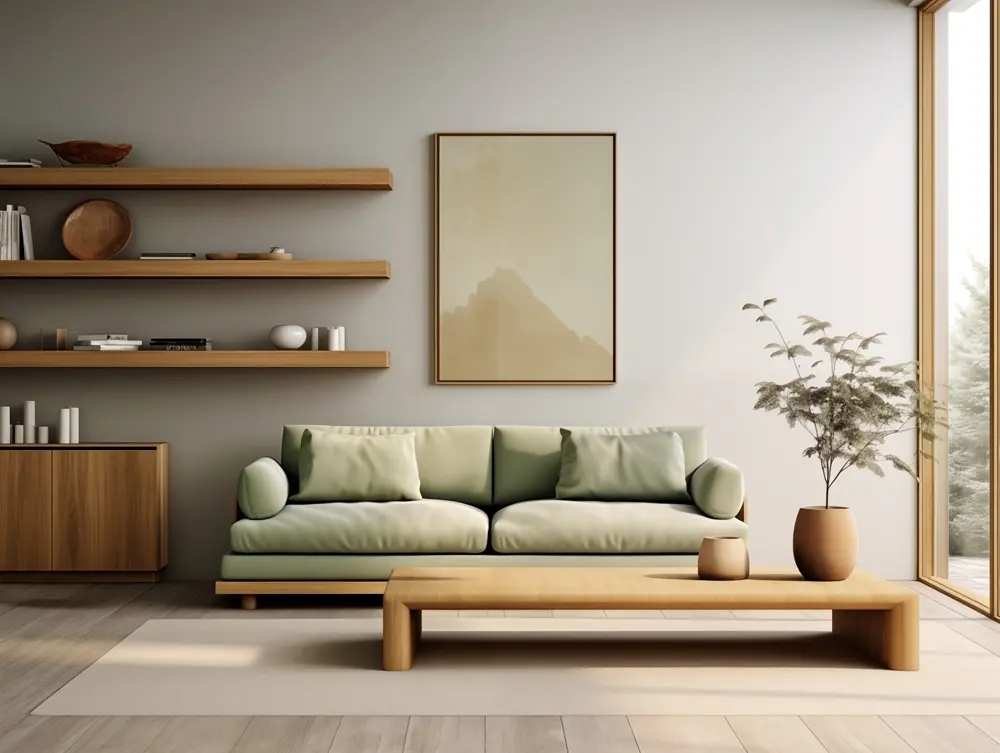
The Japandi design style is inherently adaptable and it naturally evolves with the seasons. While Japandi favors timeless, neutral tones and natural materials, adjusting the color palette according to the changing seasons can enhance the warmth, light, and mood of your space, creating a cozy and balanced environment year-round.
Spring: Embrace Freshness and Renewal
Spring brings a sense of renewal and growth. As nature begins to awaken with blossoming flowers and bright, clear skies, your Japandi color palette should reflect the same lightness and fresh energy. The spring season calls for soft, calming tones such as light cream, warm white, and soft taupe, coupled with accent colors like soft sage green, pale lavender and light blue.
Summer: Warmth and Comfort with a Touch of Coolness
Summer is about warmth, relaxation, and enjoying the outdoors. The Japandi palette in summer emphasizes warm, earthy tones with accents that evoke coolness. Think of light, airy shades like light greys, off-whites, and beige. You can also add deeper tones like soft blues and terracotta.
Autumn: Cozy Warmth and Rich Earth Tones
Autumn is a season that evokes warmth, introspection, and comfort. This is the perfect time to incorporate warm, deep colors that create a cozy, enveloping atmosphere. Keep your base neutral colors but add warmth with deeper shades of beige, taupe, and warm grays. Rich, autumn-inspired shades such as deep oranges, mustard yellows, warm browns, and burnt reds create a cozy and welcoming space.
Winter: Embracing Warmth, Comfort, and Subtle Contrast
Winter is the season of coziness and reflection. A Japandi winter colour palette should emphasize warmth, comfort, and a sense of serenity. Soft whites, muted greens, and deeper hues create a peaceful atmosphere. Richer, deeper tones such as navy blue, forest green and burgundy work well as winter accent colors, creating an inviting, intimate space.
5. 5 Tips for Incorporating the Japandi Color Palette
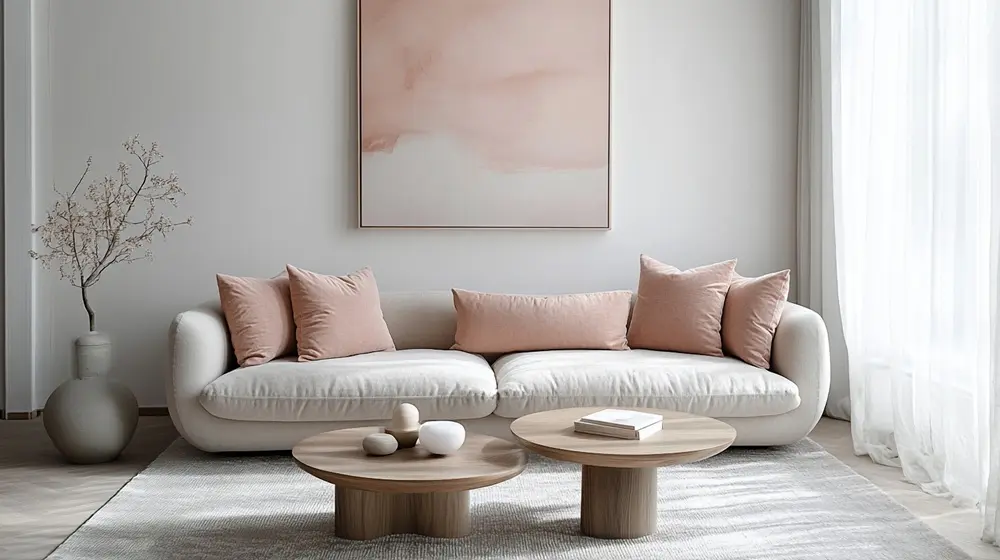
Incorporating the Japandi color palette into your home involves more than just picking color, it is about creating a space that feels natural, grounded, and tranquil. Here are some actionable tips to help you seamlessly integrate the Japandi color palette into your space.
1. Incorporate Subtle Pops of Color
While the Japandi style emphasizes muted tones, small pops of color can bring personality to the space without disrupting the overall harmony. These pops should still feel natural and understated.
Introduce these colors through smaller items like artwork, vases, or throw pillows.
2. Layer Textures for Depth
Integrating a variety of textures in the decor prevents the Japandi palette from feeling flat or sterile. Use soft textiles, rough ceramics, and smooth wood finishes to create layers of visual interest within the same color scheme.
Keep the palette cohesive by sticking to a similar color family when layering textures.
3. Embrace Natural Materials
Incorporating natural materials like wood, linen, wool, rattan, and stone not only enhances the Japandi color palette but also adds texture and warmth.
Match the tones of natural materials with your color palette. For instance, pair light wood furniture with a neutral base or complement dark walnut with charcoal and beige tones.
4. Choose Minimalist and Functional Decor
Japandi design values intentionality, so every piece in the room should serve a purpose. Additionally, choose functional decor items which align with the color palette.
5. Use Soft, Natural Lighting
Lighting plays a crucial role in bringing out the subtle beauty of the Japandi color palette. Choose lighting fixtures that complement the natural tones and materials in your space.
6. The Seamless Integration of Color, Culture, and Materials
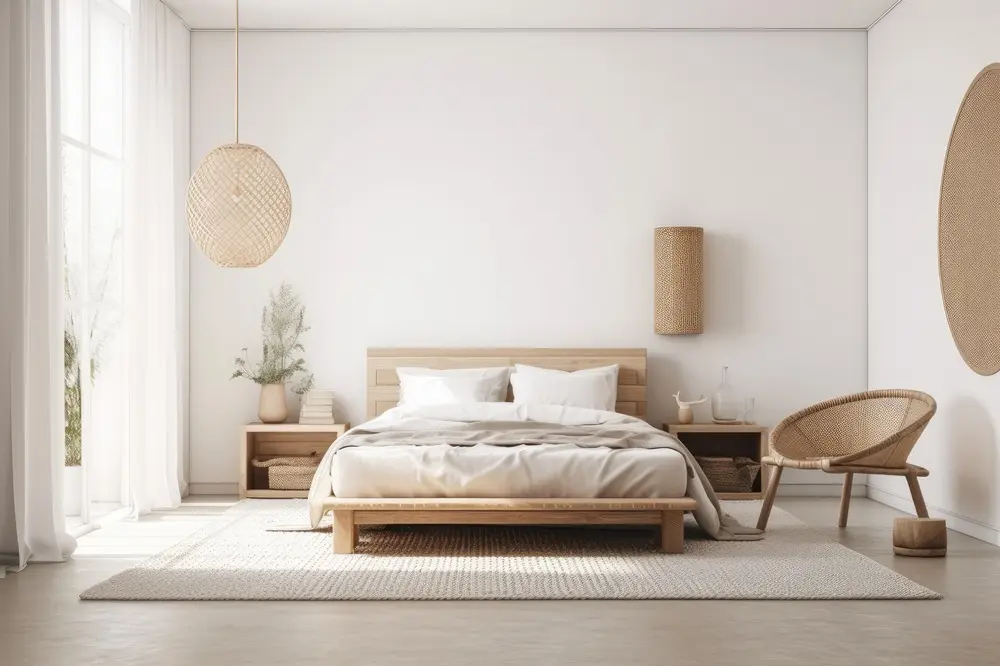
The Japandi color palette is more than just a collection of colors; it is a reflection of cultural philosophies and an intentional design approach. The embrace of imperfection through Wabi-sabi, combined with the warmth and comfort of Hygge, creates a palette that is rich in depth and meaning. These colors come to life when paired with natural materials, fostering a space that feels peaceful, inviting, and timeless. By mastering its foundations and adapting it to your space, you can craft a Japandi-inspired home that is not only aesthetically pleasing but also emotionally nurturing.

